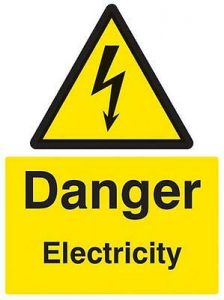 The Electricity at Work Regulations 1989 require employers to assess the work activities which use electricity, or which may be affected by it, and to put in place safe systems of work. There are also requirements in relation to the safe maintenance of electrical equipment and installations. Under the regulations, employers should ensure the following in relation to electrical equipment.
The Electricity at Work Regulations 1989 require employers to assess the work activities which use electricity, or which may be affected by it, and to put in place safe systems of work. There are also requirements in relation to the safe maintenance of electrical equipment and installations. Under the regulations, employers should ensure the following in relation to electrical equipment.
Portable electrical equipment can be described as equipment that is not part of a fixed installation but is intended to be connected to a fixed installation, or a generator, by means of a flexible cable and either a plug and socket, or a spur box, or similar means.
When using portable electrical equipment, employers should ensure the following.
Employees using the equipment (including extension leads) should be encouraged to look at it critically and check for signs that it may not be in sound condition.
Fixed electrical systems in new buildings have to comply with relevant building standards and controls and many now have integral safety features, such as residual circuit breakers. BS 7671 (IET Wiring Regulations, 18th Edition) sets the standards for electrical installation in the UK.
It is a legal requirement that all electrical work should be carried out by competent persons. A successfully completed electrical apprenticeship, with some post-apprenticeship experience, is one way of demonstrating technical competence for general electrical work.
Fixed installations and portable electrical equipment should be subject to a maintenance regime. This information should be kept by a H&S Representative.
Formal visual inspections should be undertaken by a suitably trained person. Periodic combined inspection and testing is the only reliable way of detecting certain faults, and should be carried out to back up the checks and inspection regime.
Contact us should you have any questions.